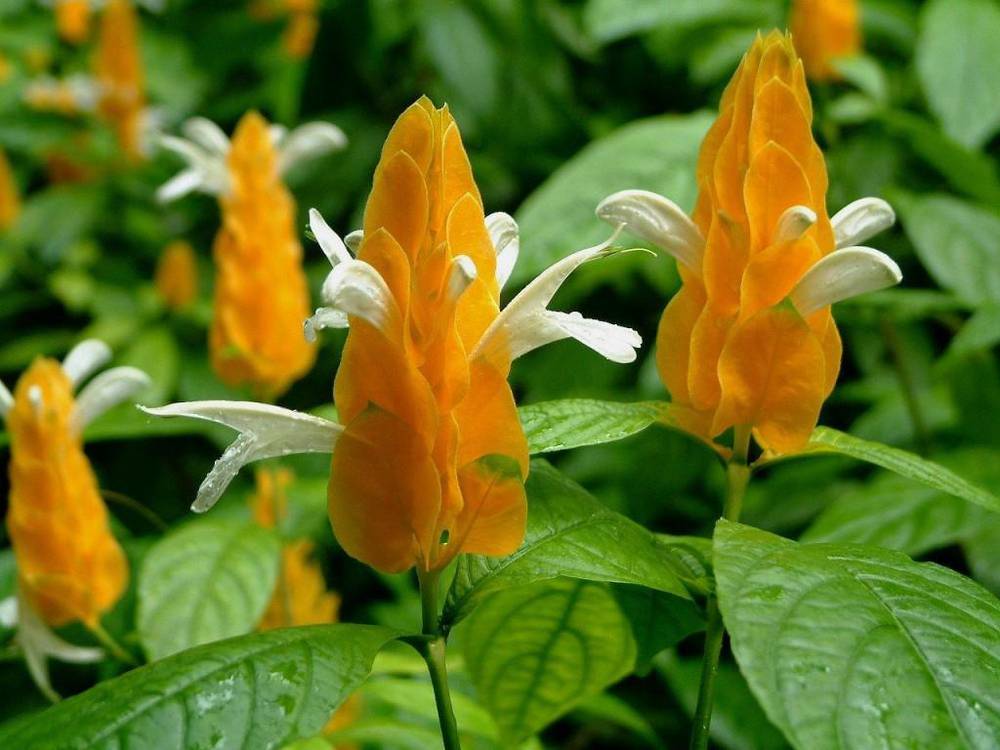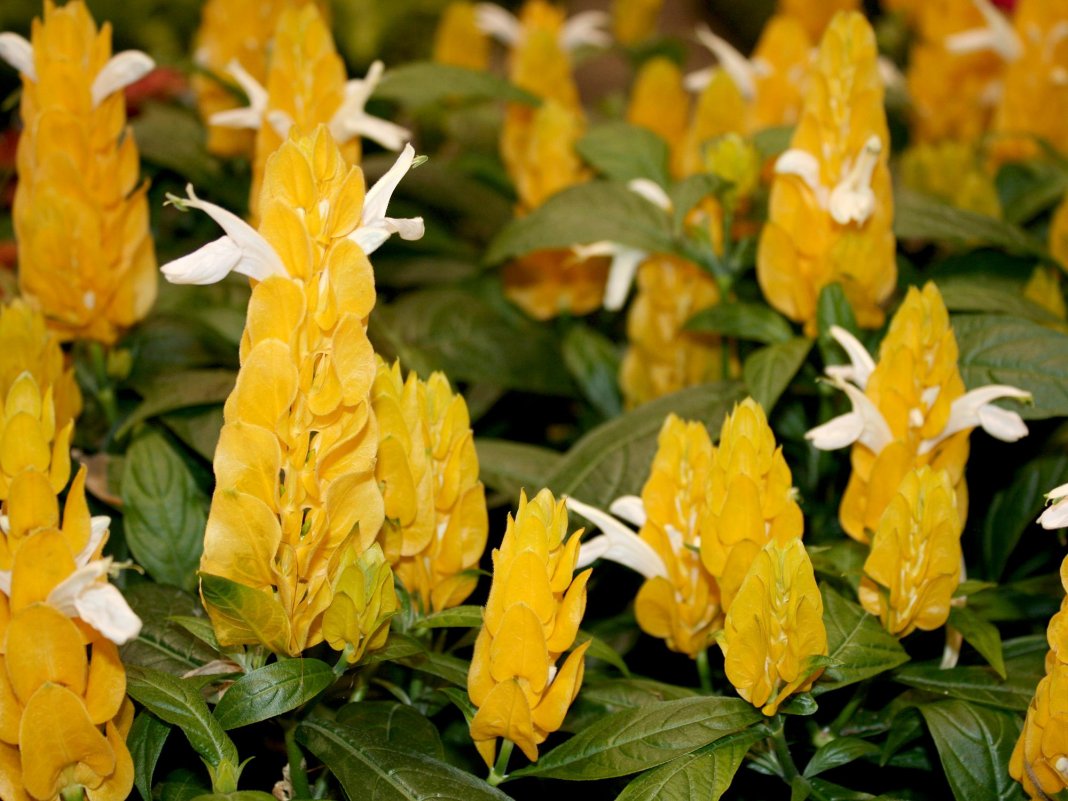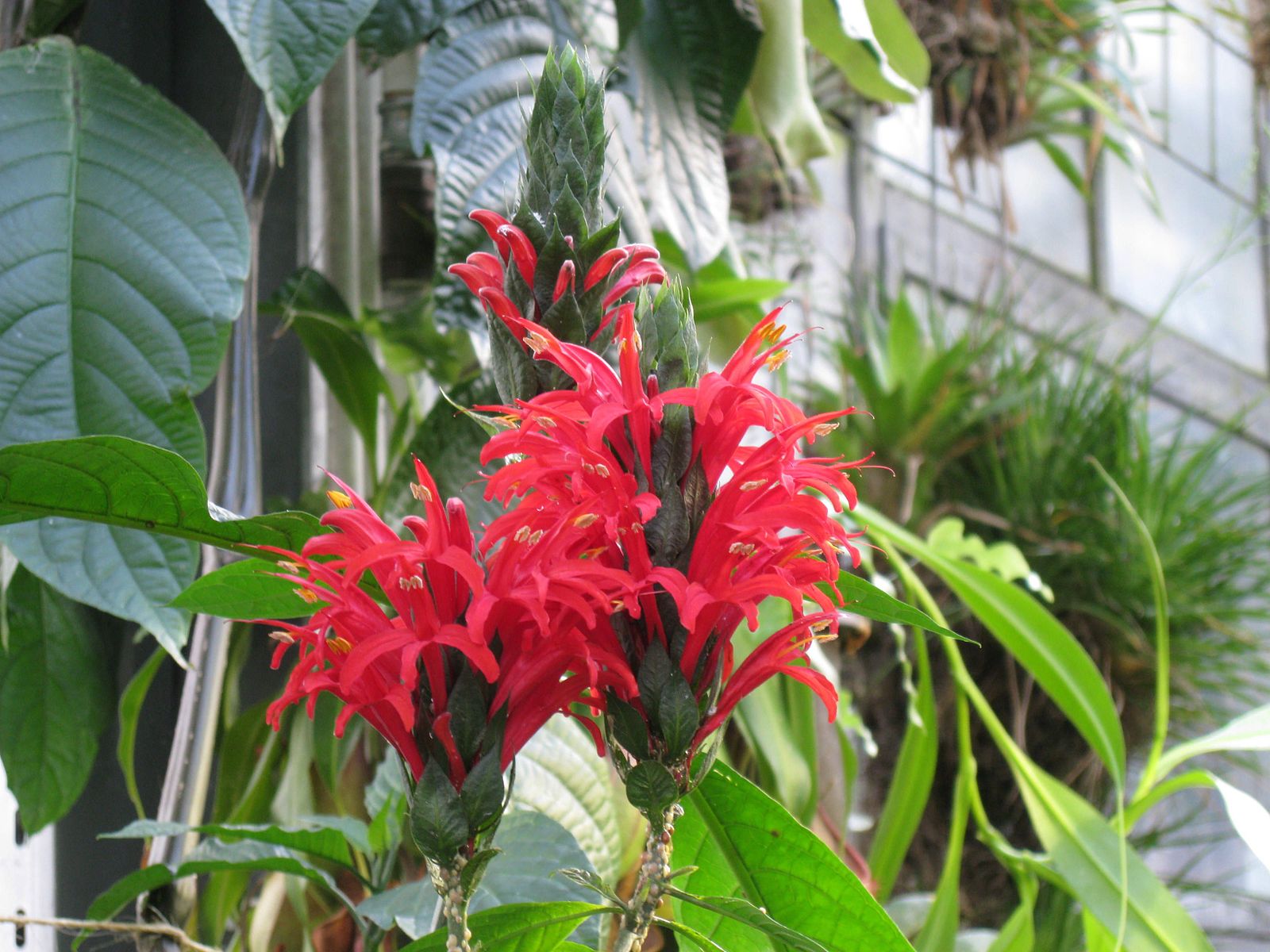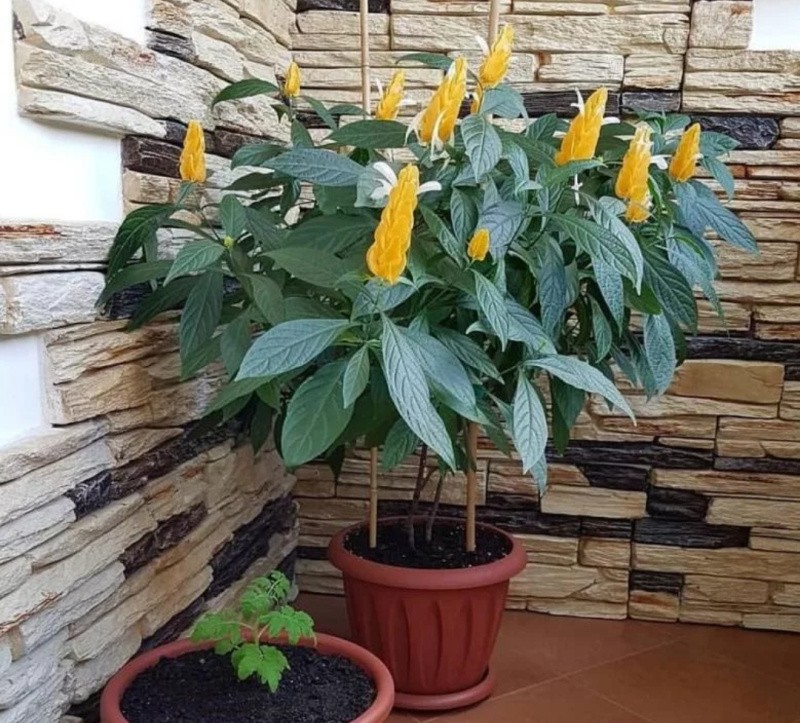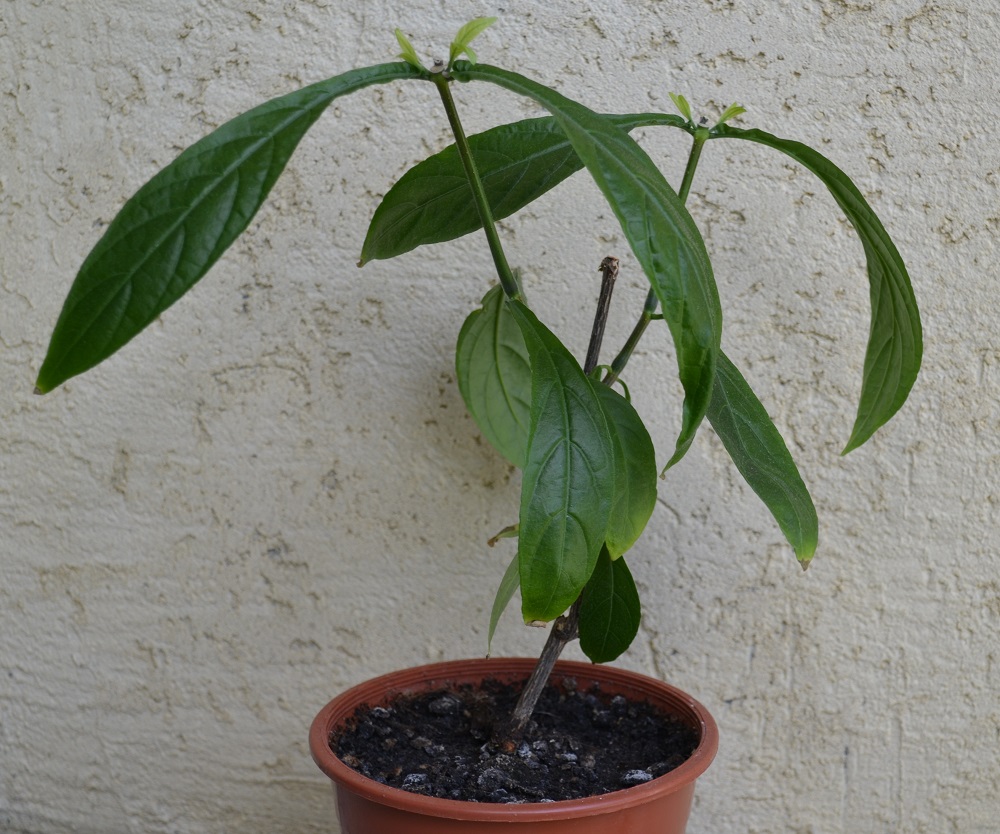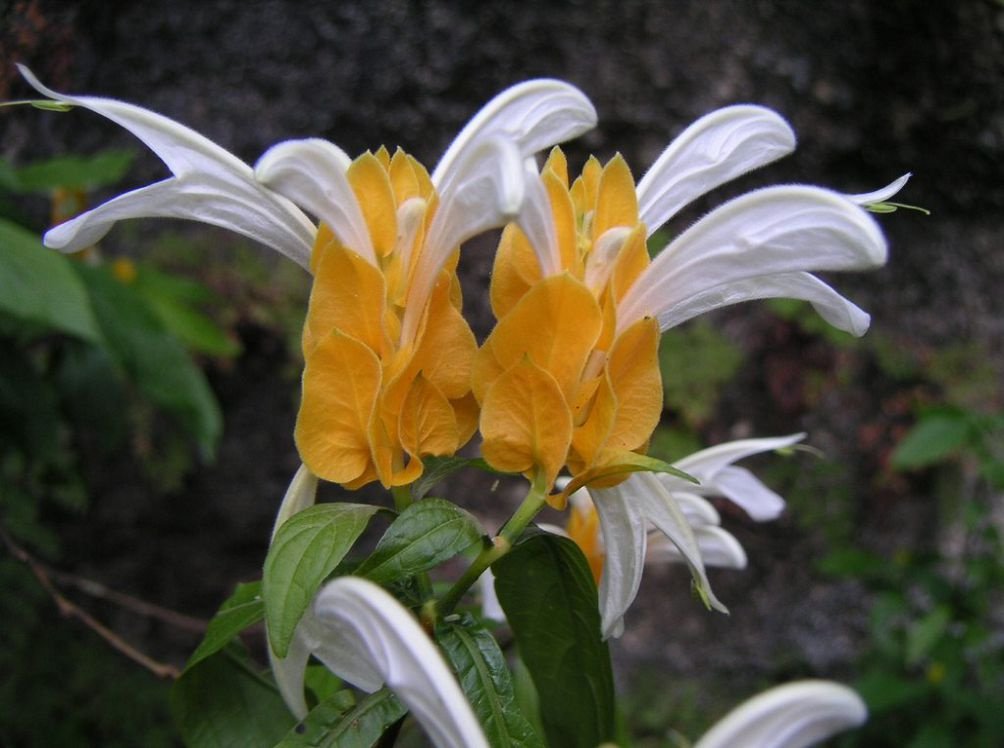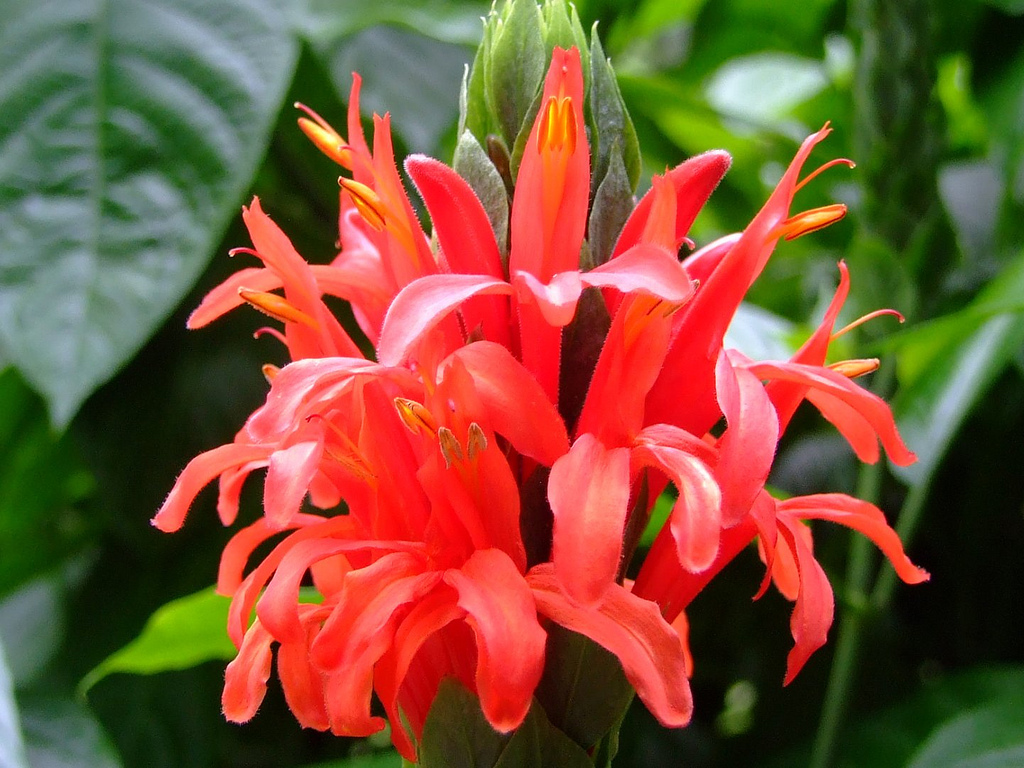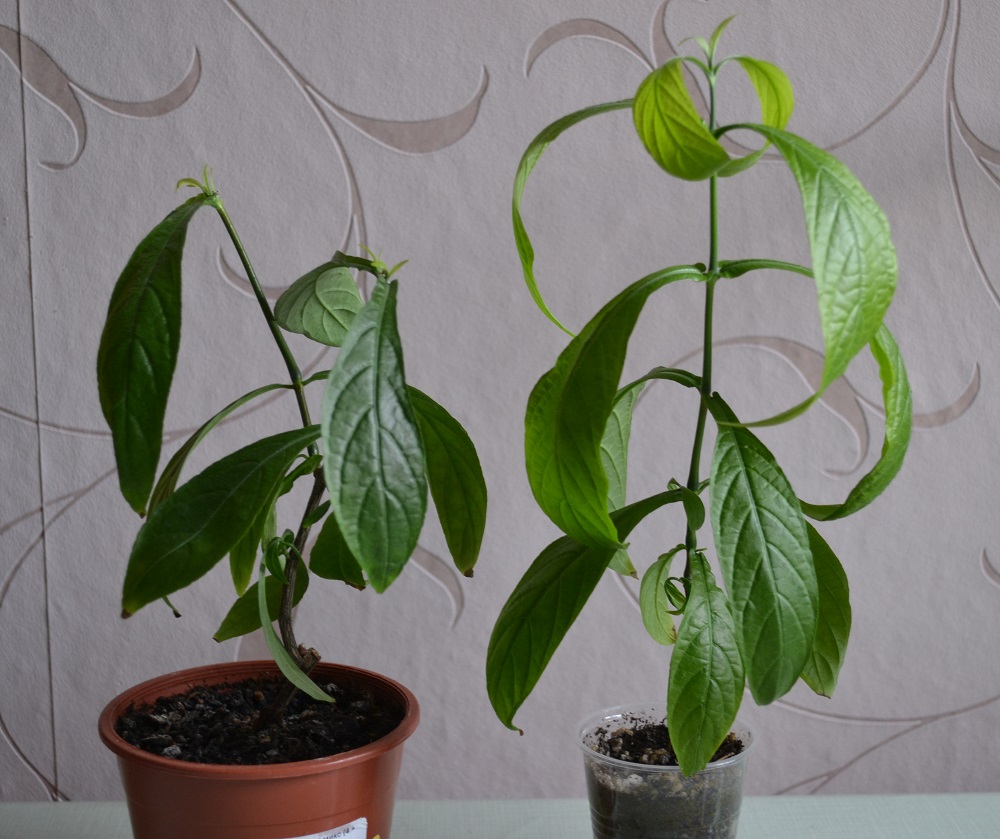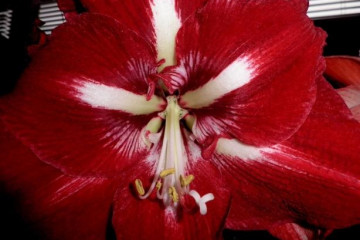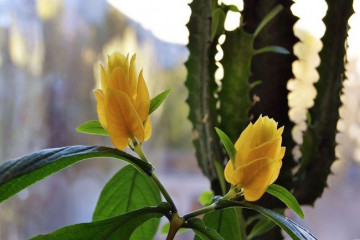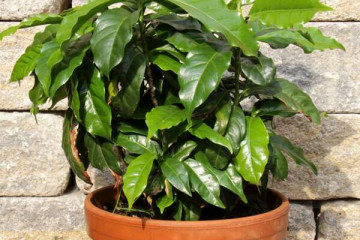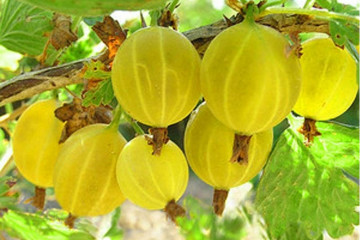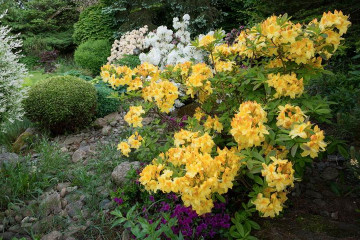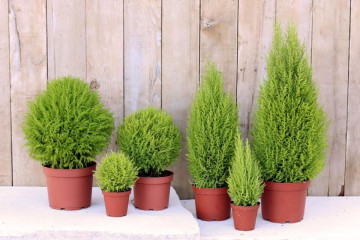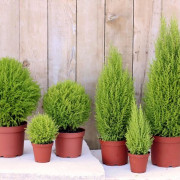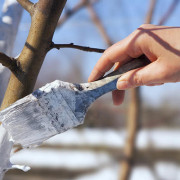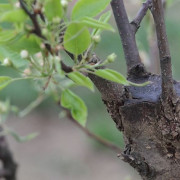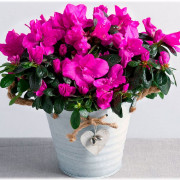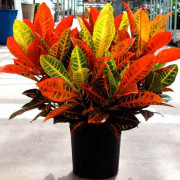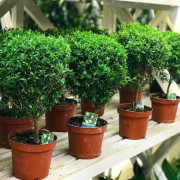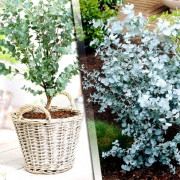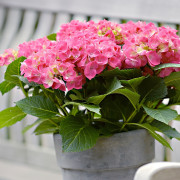Pachystachis yellow and red - how to care for a plant
Content:
An evergreen shrub can be a decoration for any room. Pachystachis yellow is distinguished by its external characteristics and bright flowering. However, in order to care for a crop, it is necessary to have certain knowledge, otherwise the bush will develop poorly.
Pachistachis - what kind of flower is it, what family does it belong to?
The evergreen shrub belongs to the southern cultures. The plant is perennial, it can be grown both in the open field for landscaping, and as an indoor flower. The culture belongs to the Acanthus family. In natural conditions, the flower grows in the tropics.
Brief description, history of origin or selection
At home, the bush can reach 100 cm in height, its leaves are large, oblong, lowered down. The color of the leaves is bright green. The shoots are stiff. The inflorescences are spike-shaped. In an adult bush, white small elongated petals appear on the buds. With proper care, flowering can last up to 2 months.
The plant was first seen in Peru and Mexico. However, the culture is also found in the wild in Asia. In Europe, the plant appeared thanks to travelers who brought an exotic plant.
Varieties of indoor plants with names, what they look like
Despite the difficulties in care, pachystachis is often found as a houseplant. Only two types of crops are grown at home.
Pachystachis yellow (Pachystachys lutea)
Pachystachis yellow is often grown on windowsills. Outwardly, the plant looks like a shrub with stiff shoots. The height of the bush reaches 50 cm, the leaves are large with veins. The leaves can be up to 10 cm in size. The inflorescences have a dense texture and are often compared to a spike or candles. The bush blooms from June to September.
Pachystachis red (Pachystachys coccinea)
Another plant variety is red pachystachis. The bush is grown much less often, this is due to the large size of the plant. With proper care, the bush grows up to 2 meters. Sprawling shoots, large leaves. The inflorescences are deep red in color, the buds resemble a panicle.
Pachistachis care at home
The cultivation of pachistachis requires compliance with some rules. Care errors often lead to the death of the bushes.
Illumination and temperature conditions
Indoor flower pachistachis grows in bright light. Lack of light can lead to disease. However, if exposed to direct sunlight, the bush may die. Therefore, it is necessary to grow the plant in a room with a sufficient amount of light, it is recommended to shade the plant in the summer.If necessary, use special fluorescent lamps. When placing a bush on a windowsill, preference should be given to the western side of the house.
In summer, the air temperature in the room should be + 17 ... +22 degrees, and in winter it should not fall below + 15 ... +17 degrees. Such indicators are necessary for the plant to be able to go into a dormant state.
Watering rules and humidity
When leaving, yellow pachistachis requires timely watering. In the summer, it is necessary to water the bush abundantly several times a day. However, the accumulation of water in the pot should be avoided. In winter, the frequency of watering must be reduced to 1 time in 5 days. In order for the plant to develop well, it is necessary to monitor the humidity of the air. To do this, pachistachis is sprayed with water using a spray bottle.
Top dressing and soil quality
An indoor flower needs regular feeding, and it is also picky about the type of soil. The soil should be light and breathable. When self-preparing the soil, it is necessary to mix humus, peat and deciduous soil in equal proportions. Also, sand must be added to the prepared soil.
As a top dressing, a special complex type of fertilizer for flowering crops should be used. It is necessary to add nutrients after abundant watering once every 2-3 months.
Flower container size
The amount of capacity for a plant depends on the age of the crop. Young bushes are grown in medium-sized pots. When the bush grows, it must be transplanted. The roots of the bush should not touch the sides of the pot.
Pruning and replanting
To get a healthy flower, it is important to know how to properly care for pachystachis. One of the important criteria for care is transplantation and timely pruning of shoots.
To make the crown lush, and the plant is less exposed to diseases, pruning is carried out. Shoots of the culture at the age of 1 year are cut so that a stump no more than 15-20 cm long remains above the soil. After the leaves appear from the buds, 3 of them must be removed. In the spring, before flowering, you need to pinch the tops of the shoots. Such procedures are carried out annually.
The pruned bush should be transplanted into a new potting mix. For this, the bush is carefully watered and carefully removed from the pot.
Features of flowering plants
During the flowering period, pachistachis is very beautiful. The duration of flowering depends on proper care. It is also necessary to prune old shoots in a timely manner, since peduncles appear only on young shoots.
A period of activity and rest
After flowering, a dormant period begins for the plant. At this time, it is important to observe the following care features:
- Watering should be reduced, but the soil should always be moist. It should not be allowed to dry out.
- Fertilizers should not be applied during the entire dormant period.
- The plant must not be pruned.
During the period of active growth, the plant needs careful care and timely fertilization. The lack of nutrients in the soil reduces the duration and abundance of flowering of the bush.
Types and shape of flowers
The plant is famous for its buds and vibrant flowers.Outwardly, the bud of a yellow pachystachis looks like an ear with bract leaves, so some growers compare the bud with shrimp.
The red type of culture has a bud that looks like a sail or a lush panicle. In some cases, the buds may appear pink in color.
Propagation of pachistachis by cuttings
Pachistachis has only one breeding method - this is cuttings. With this method, you can get healthy seedlings.
How to properly propagate pachistachis by cuttings:
- For reproduction, the apical shoots are used, on which there are two internodes. The shoot must have at least 2 leaves.
- The leaves are cut in half.
- The shoot should be cut at an angle.
- The escape must be placed in Kornevin for several hours.
- A light substrate is placed in small seedling containers and cuttings are planted there for rooting.
- From above, the container is covered with a bottle, which must be covered with plastic wrap. However, the film must be removed every day.
After the roots appear, the cutting must be planted in a large pot.
Growing problems, diseases and pests
Pachistachis, the care and reproduction of which is usually not difficult, in some situations may suffer due to errors of the grower during cultivation. The main problems and their causes:
- The plant withers if there is not enough fresh air in the room.
- Leaves may fall off and turn yellow if the plant is frequently exposed to drafts.
- The shrub sheds its lower foliage when exposed to cold air or due to prolonged drought.
- Flowers often wither if moisture gets on them.
- The leaves have turned pale - this is the first sign of a lack of nutrients.
Many growers are interested in why the leaves of the pachistachis curl and wither. The cause of this problem is spider mites. With its presence, a small cobweb can be seen on the leaves.
Also, a whitefly appears on the bushes, as a result of which the leaves of the plant become covered with small spots, and the plant itself begins to wilt. The insect is recommended to be eliminated manually.
Among the diseases, it is necessary to highlight root rot. A problem arises as a result of excessive use of water. To eliminate rot, it is necessary to reduce watering and transplant the plant to a new place. In other cases, pachistachis has a high immunity to diseases and is rarely exposed to them.
Growing pachystachis on a windowsill can be tricky. However, if all the rules for care are followed, the plant will delight with its exuberant flowering until autumn. It is very simple to propagate a culture, it is enough to know all the intricacies of cuttings. The plant can be grown in the open field in the summer, and transplanted into a pot for the winter.
